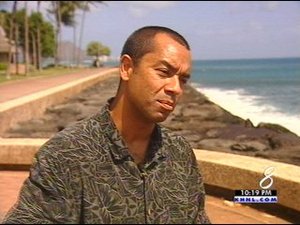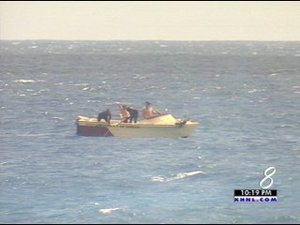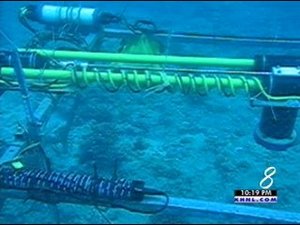
|
| ©KHNL |
| Dr. Geno Pawlak |
Kakaako - Oahu's south shore is home to some of the best surfing conditions in Hawaii. However, it's what's below that has scientists at the University of Hawaii interested.
Off Kakaako, waves bring valuable information. Different technologies at a depth of 40 feet measure the currents and water quality. This is the Kilo Nalu Reef observatory. Dr. Geno Pawlak helped launch it in 2005.
"There's not too many places on the island or for that sake in the world that you can get out to this sort of depth 10 to 20 meters depth and open ocean conditions," said Dr. Pawlak.

|
| ©KHNL |
During the day, UH researchers gather data on a quick boat trip. At night, a beaming green laser scans the sandy bottom. It's all to better understand the currents and waves and their impact on the seabed.
"For example, after there was a sewage spill there was a lot of questions about how soon is it safe to go back into the water? Clearly, very quickly the water gets mixed up but what happens to the sand? What happens to the pollutants that cycle through the sand? How quickly do those actually get through? We don't have numbers," said Dr. Pawlak.

|
| ©KHNL |
Dr. Pawlak says one thing they do know is a clean ocean equals a healthy ecosystem.
"So we can hopefully say something about keeping things healthy, keeping the reef healthy."
The reef observatory continues to grow. U.H. researchers just received new funding from the national science foundation, to expand operations at the Kilo Nalu Site, next year.
You can hear more about the reef observatory from Dr. Pawlak in two weeks.
He'll be speaking at the 0utrigger Reef on Kalakaua Avenue on Wednesday August 13 at 6 p.m.
[View News Video]



Reader Comments
to our Newsletter